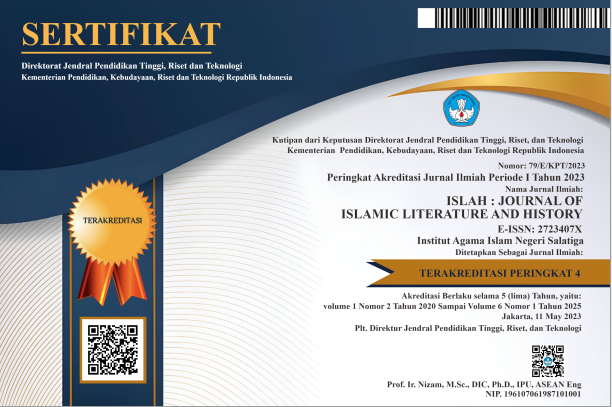The Phenomenon of Body Shaming and Speech Ethics Shifts among Societies and Social Media Users
Abstract
Body shaming refers to all the words offending someone's physique that seem normal when meeting someone called fat or too thin, the body is not ideal, the feet are too small, the hands are too big. It may sound normal, but those who get these statements suffer pain in their hearts and cause regret about their physical condition and go on a strict diet to look ideal. The body shaming phenomenon has now entered the realm of social media. Moreover, nearly all Indonesians have social media, and even worse, the wide access to social media makes body-shaming victims feel even more humiliated. While many people are still in denial about body shaming, considering it to be far-fetched, in reality, there are many victims of body shaming. This paper refers to several cases of body shaming in the real world and the virtual world. With the descriptive qualitative method of collecting data through observation and interviews, the author found the fact that body shaming is increasingly epidemic, especially in social media. When there is a photo of someone in cyberspace, there will definitely be negative comments that hurt. In fact, it is often likened to an animal, such as describing someone as a lumoe (ox), this happens in the social media user community in Aceh. Even though this behavior and speech are very contrary to the customs of the Acehnese people who uphold the teachings of Islam, the current conditions with the enormous openness to social media, da'wah for bad speech looks more massive than speech that is full of adab and politeness.
Keywords
Full Text:
PDFReferences
Abuddin Nata, Manajemen Pendidikan, Mengatasi Kelemahan Pendidikan Islam di Indonesia (Jakarta: Kencana,2007)
Anastasia Siwi, Fatma Utami, Nur Baiti, Pengaruh Media Sosial Terhadap Perilaku Cyber Bullying Pada Kalangan Remaja, Volume 18 No. 2 September 2018, p. 58-259.
Andri Priyatna, Let’s End Bullying: Memahami, Mencegah dan Mengatasi Bullying, (Jakarta: Elex Media Komputindo, 2010)
Dalley, S., Bron, G., Hagl I., Heseding, F., Hoppe, S., Wit, L. (2019). Bulimic symptoms in a sample of college women: disentangling the roles of body size, body shame and negative urgency. Springer
Damanik, Tuti .M. 2018. Skripsi: Dinamika Psikologis Perempuan Mengalami Body Shame
Detik.com, 2018
Duarte. (2017). The impact of early shame memories in Binge Eating Disorder: The mediator effect of current body image shame and cognitive fusion.
Ernita Dewi, Perempuan dan Remaja Dalam Rotasi Perkembangan Zaman, (Banda Aceh:Ar-Raniry Press, 2021)
Fitriana, S. (2019). Dampak body shaming sebagai bentuk kekerasan terhadap perempuan
Luis Ma’luf, Kamus al-Munjid (Beirut: al-Maktanah al-Katulikiyah,t.t),
Micheal, Suzy S. Azeharie.Perlawanan Penyintas Body Shaming Melalui Media Sosial.2020.
Sumi Lestari, Bullying or Body Shaming? Young Women in Patient Body Dysmorphic Disorder, Vol 3 Nomor 1 (2019)
Syarifah Habibah, Akhlak Dan Etika Dalam Islam, Jurnal Pesona Dasar Vol. 1 No. 4, Oktober 2015
The Concept of Bullying and Harassment at Work: The European Tradition Ståle.2011
Yessi Febrianti, Kusnul Fitria, Pemaknaan Dan Sikap Perilaku Body Shaming Di Media Sosial (Sebuah Studi Etnografi Digital Di Instagram), Jurnal Media Dan Komunikasi | Vol. 3 No. 1, September 2020
DOI: https://doi.org/10.18326/islah.v3i2.169-184
Refbacks
- There are currently no refbacks.
Copyright (c) 2022 Ernita Dewi, Arsyi Arsyi

This work is licensed under a Creative Commons Attribution-ShareAlike 4.0 International License.
Publisher:
Faculty of Ushuluddin, Adab, and Humanities
Institut Agama Islam Negeri (IAIN) Salatiga
Jl. Nakula Sadewa V No. 9, Kota Salatiga, Jawa Tengah 50722
Lt. 2 Gedung Skretariat Fakultas Ushuluddin Adab dan Humaniora














